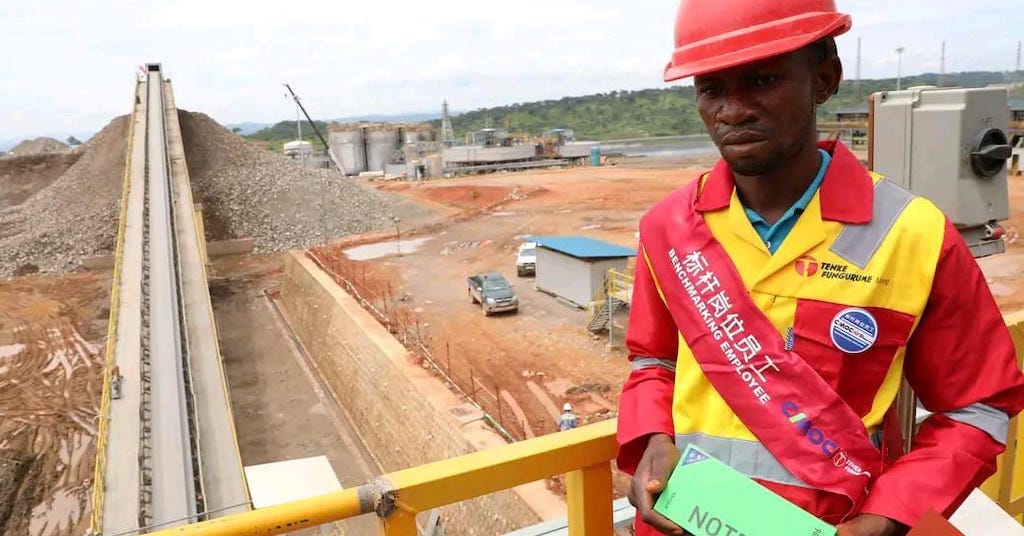
14 Feb The cobalt curse of the Congo
Cobalt is a critical energy transition mineral, but its use in batteries and electric vehicles comes at a high price for the Democratic Republic of the Congo. Oscar Nkala investigates

A worker at Tenke Fungurume Mine, a subsidiary of China’s CMOC Group, which became the new king of cobalt in the DRC in 2023, according to Bloomberg Media. Photo courtesy Alexis Kazemb
When Roger Milolo left his hometown on the border between the Democratic Republic of Congo (DRC) and Zambia to work as a plant operator on a cobalt mine, he hoped his would be a “rags to riches” story.
However, his dreams fizzled just three days into the new job when a rockfall amputated his left arm and mangled his rib cage.
“The mine paid the hospital bill and gave me three months to recuperate,” he told Oxpeckers. “On return, they said there was no more job for me because I have one arm. With no money, no job and no place to live, I was taken in by a Zambian friend. Together we survive on fishing along the Lualaba River. I was never a fisherman, but I have learnt to live off the little that the water can provide.”
A life of hopelessness, regret and longing for lost opportunities is a fate Milolo shares with other inhabitants of Villa de Lualaba, a rusty compound that occupies the western bank of the Lualaba River (formerly the Congo River), in the south-eastern part of the country.
The compound is mostly inhabited by ex-miners-turned fishermen who left the nearby copper and cobalt mines due to retrenchment, injury and other circumstances that rendered them destitute. The majority are Congolese, but among them are failed fortune seekers who came from Zambia, Zimbabwe, Malawi, Rwanda, Uganda, Burundi and Tanzania in search of better lives, which continue to elude them despite the mineral riches of the DRC.

Semi-aerial view of Mutanda Mining complex (above), and the main open-cast mine complex at the Glencore-owned Mutanda Mine (below), both in Kolwezi. Images sourced from Facebook

Energy transition
The DRC is the world’s top producer of a wide range of minerals that are critical to the global energy transition from fossil fuels to more climate-friendly options, including copper, cobalt, manganese, octane and lithium. It holds an estimated 50% of the global cobalt reserves and supplies more than 70% of global demand for the mineral, used in batteries and electric vehicles.
From their shacks in the shanty town above the Lualaba River, the ex-miners watch the endless traffic of trucks ferrying these minerals to ports in South Africa, Kenya, Tanzania and the markets beyond.
Milolo interprets his fate as proof that humiliation and despair are the only benefits the Congolese people will ever reap from the accelerated global pursuit of energy transition minerals.
“Although these minerals are in our country, they are not for the natives of the Congo to benefit from. They belong to the government in Kinshasa, its representatives in the province, and the Chinese who own the mines,” he said.
“Foreign companies are making millions from minerals taken from right under our feet, but this mining has brought neither riches nor joy for us. People are still being displaced and leaving their agricultural lands to be destroyed by the expansion of the mines, often with no compensation.”

Cobalt ore packaged for export at Ruashi Mine in Kolwezi (above), and smuggled Congolese minerals intercepted in Rwanda (below). Images sourced

Displacements
Displacement to make way for mining is what caused 73-year-old Josephine Bemba to quit subsistence farming and start a life of fishing and alluvial manganese mining along the Lualaba River instead.
She was 63 when everyone in her village was evicted to make way for a mine owned by Mutanda Mining, one of the top copper and cobalt producers in the DRC. Initially nobody wanted to leave because they had heard about entire communities left destitute after vacating their lands to make way for new mines.
“The consultations went badly because the mine and government representatives wanted us to leave before settling the issues of compensation and relocation. We demanded the payment of compensation and written proof that there was land to resettle us before we moved,” Bemba said.
“As we grumbled about that, the mine offered to hire people from every affected family as part of the compensation package, but only if we moved out. Some people accepted that and the community became divided. We eventually left after securing a mere verbal agreement in which the mine promised to pay those affected enough money to start a new life as soon as the government provided the land to resettle us on. That never happened.”
Without the monetary compensation or land of their own, some families have returned to resettle illegally on the edges of the mine to wait for the promised eviction packages. Most of the settlers know they may never get compensated, but even the hazy promise of a life-changing financial windfall is enough to keep them hanging around.
The residents of nearby Mukumbi watch with apprehension every time bulldozers at Mutoshi copper and cobalt mine work around the mine’s perimeter fence. Separated from residential homes by a dust road, the Mutoshi open-cast mine is gradually eating into the heart of Kolwezi, the capital city of Lualaba province.
Moses Amooti is one of several Mukumbi residents who witnessed waves of evictions as the mine expanded between late 2019 and February 2022. It won’t be long before he receives his own eviction order, he said.
“My house is one of 56 properties that have been pegged into the next stage of the mine expansion project. Several acrimonious consultative meetings were held between the residents, representatives from the mine and government officials.
“It was eventually agreed that those who lost houses to the mining concession would be paid US$50,000 each to buy properties elsewhere in Kolwezi. That has not happened and with no timeline to it, every new day is a count-down to eviction for us. The government has abandoned us.”
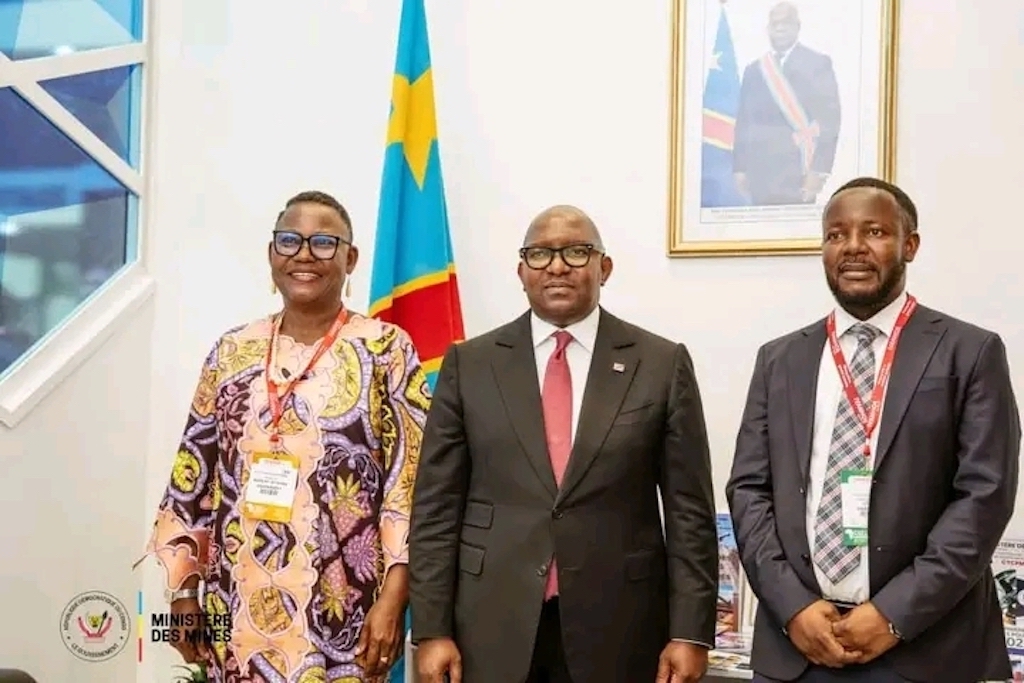
Left to right: DRC Mines Minister Antoinette Nsamba Kalambayi, DRC Prime Minister Sama Lukonde Kyenge and a delegate at the recent Investing In African Mining Indaba held in South Africa. Photo courtesy Ministry of Mines, DRC
Collateral damage
The city of Kolwezi, with an estimated population of close to 600,000, is at risk of disappearing as copper and cobalt mining expand around it, according to Powering Change or Business As Usual: Forced evictions at industrial copper and cobalt mines in the Democratic Republic of Congo, a recent report produced jointly by Amnesty International and the Congo-based Initiative for Good Governance and Human Rights.
“The city remains dominated, physically and economically, by the mining industry. It was built on land containing potentially rich mineral deposits. Because nearly all of Kolwezi falls within the perimeters of mining concessions, it is possible that most of the city could be sold off for mining operations in the future, putting nearly all its residents at risk of eviction,” the report found.
“The people living in the region should be benefiting from the growth in mining. Instead, many are being forced out of their homes and farmland to make way for the expansion of large-scale industrial mining projects. Such evictions are often carried out by mining operators with little concern for the rights of affected communities and little heed for national laws meant to curtail forced evictions in the mining sector.”
The report analysed the activities of Kolwezi Copper and Cobalt Mine, Mutoshi Mine, Metalkol Project SA and Kamoa Kakula Mining, which all operate mines around the city. Citing an escalation in human rights abuses linked to the eviction of people from new mining areas, the report said many communities around Kolwezi have become collateral damage in the search for energy transition minerals.
“The Congolese government has adopted laws meant to curtail forced evictions in the mining sector, but it has failed to implement or enforce these legal protections. Worse, Congolese authorities have in most cases actively carried out or facilitated the forced evictions documented in this report,” it stated.
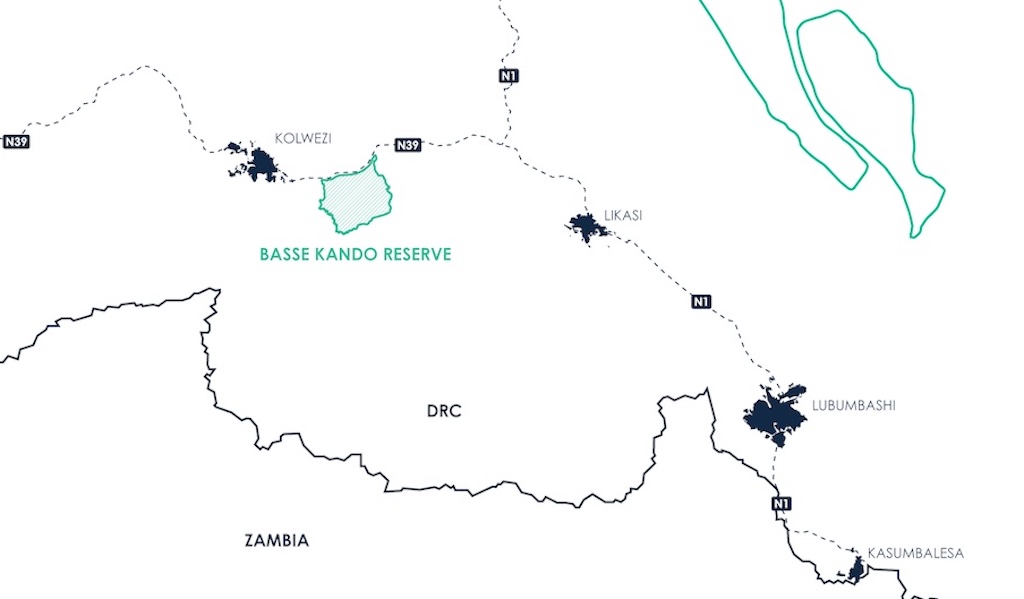
Kolwezi city is located in the southeast of the DRC. The map below indicates the extent of mining concessions surrounding the city. Graphic above courtesy C4ADS; map courtesy Sicomines
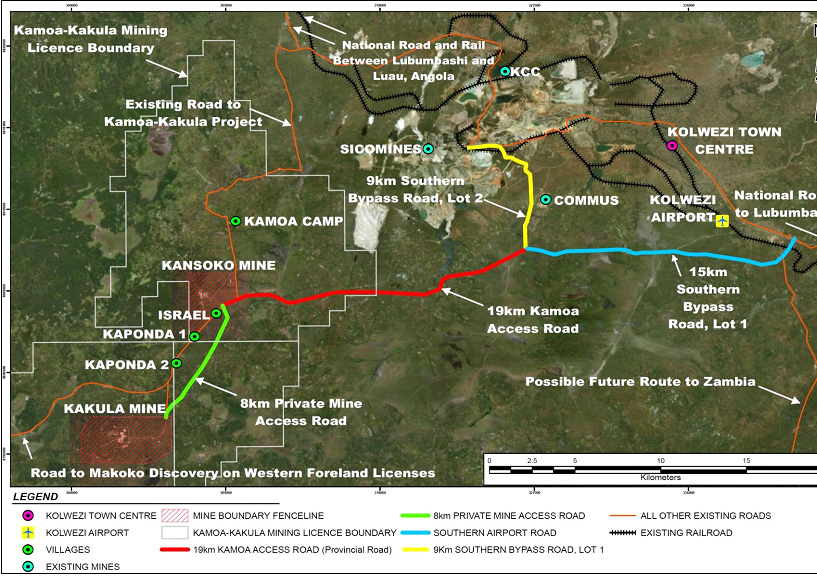
Reporters Without Borders
Mica Ntenga is the Lualaba provincial coordinator for international media monitoring and rights group Reporters Without Borders. From its headquarters in Kolwezi, the organisation monitors the human rights, public health and environmental issues arising from the extraction of energy transition minerals across Lualaba province.
“The copper, cobalt, manganese and lithium mining industry is a big source of government revenues, but the local people and environments are paying heavily for the extraction of resources that do not benefit them in any way,” Ntenga said.
“People have been evicted to make way for mining inside the city of Kolwezi and all over the province. The victims have nowhere to report the abuse because the mining companies bribe government and security officials so that they can break the laws with impunity.”
He said there are clear guidelines stating that when a mining concession is licensed on habited land, the mining company must pay adequate compensation for relocation and build decent homes for those who lose their homes or lands to mining.
“But there is nobody to implement the laws because the government and security officers who are supposed to do that live lavish lifestyles by taking bribes from the mining industry. It is a governance failure that leaves poor people face-to-face with the ruthless agents of the mining industry,” Ntenga said.
Apart from the omnipresent threat of eviction, the residents of Kolwezi are grappling with issues of air, water and environmental pollution caused by the mining industry. Ntenga said Kolwezi is choking in industrial fumes because it is surrounded by five mines.
“All these mines are spewing fumes into the air and pumping contaminated mine waters into the local river ecosystem on a round-the-clock basis. While they are required to assess and control pollution levels, the mining companies do not seem to do so,” he said.
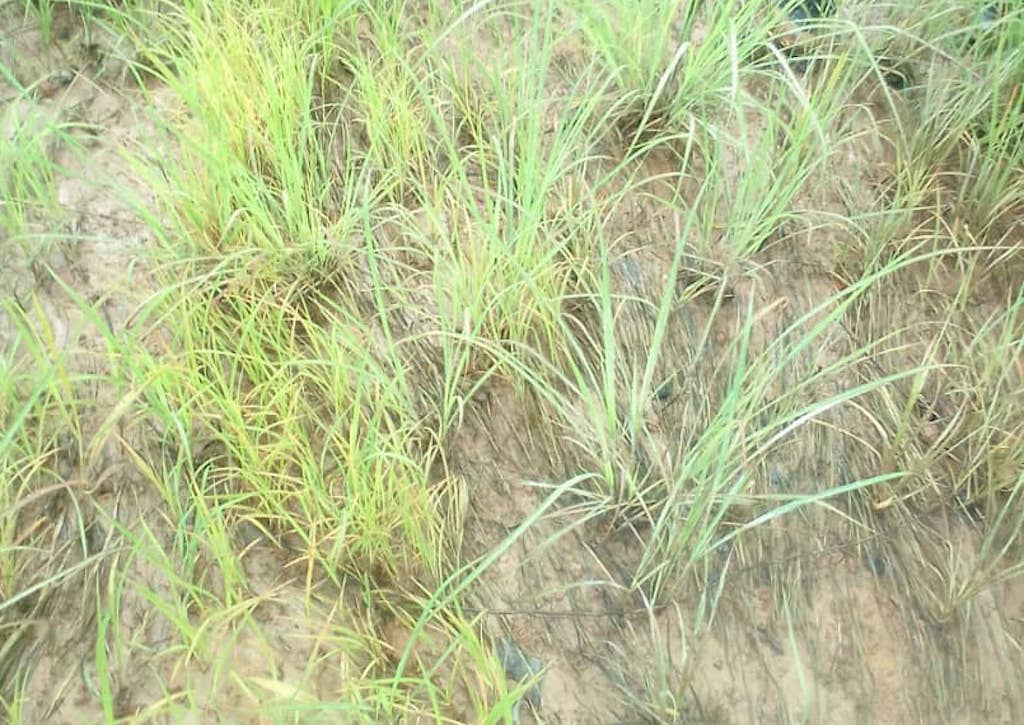
Vegetation yellowing due to acid mine drainage and contaminated water around the Fungurume mine complex. The mine is planning to relocate 1,000 households shortly after an outbreak of diseases linked to mine contamination of the air and environment. Photo courtesy Alexis Kazemb
Health risks
Intensive mining for copper and cobalt poses several public and environmental health risks, according to a study published in July 2022 by the National Centre for Biotechnology Information in conjunction with the National Library of Medicine, entitled Impacts of Trace Metals Pollution of Water, Food Crops and Ambient Air on Population Health in Zambia and the Democratic Republic of Congo.
“The area has large copper-cobalt deposits of which the extraction causes severe ecosystem damage due to pollution of water, food crops, and the ambient air negatively impacting public health.
“Contamination of water for domestic use and foods (cereals, vegetables, roots and tubers) was determined by assessing the content of trace metals. Concentrations of Ni, Pb and Cd [nickel, lead and cadmium] were higher in almost all the food crops. Mean contents of magnesium, zinc, lead, and uranium were significantly higher than the World Health Organisation maximum limits in the DRC,” stated the study.
Urine samples taken from the DRC were found to contain high levels of trace metal contamination, with children being the most affected population age-group. The study called for joint efforts from the public and private sectors to monitor the impacts of mining on the people and the environment.
Questions sent by Oxpeckers to the governor of Lualaba province and the federal minister of mines in Kinshasa did not receive any response. Queries sent to the mining companies were also ignored.
Oscar Nkala is a Zimbabwe-based Oxpeckers Associate who works on transnational investigations across borders in sub-Saharan Africa. This investigation is part of the Oxpeckers #PowerTracker series titled ‘The human cost of energy in Africa’. See New energy rush is stripping DRC’s natural assets
Find the #PowerTracker tool and more investigations here
